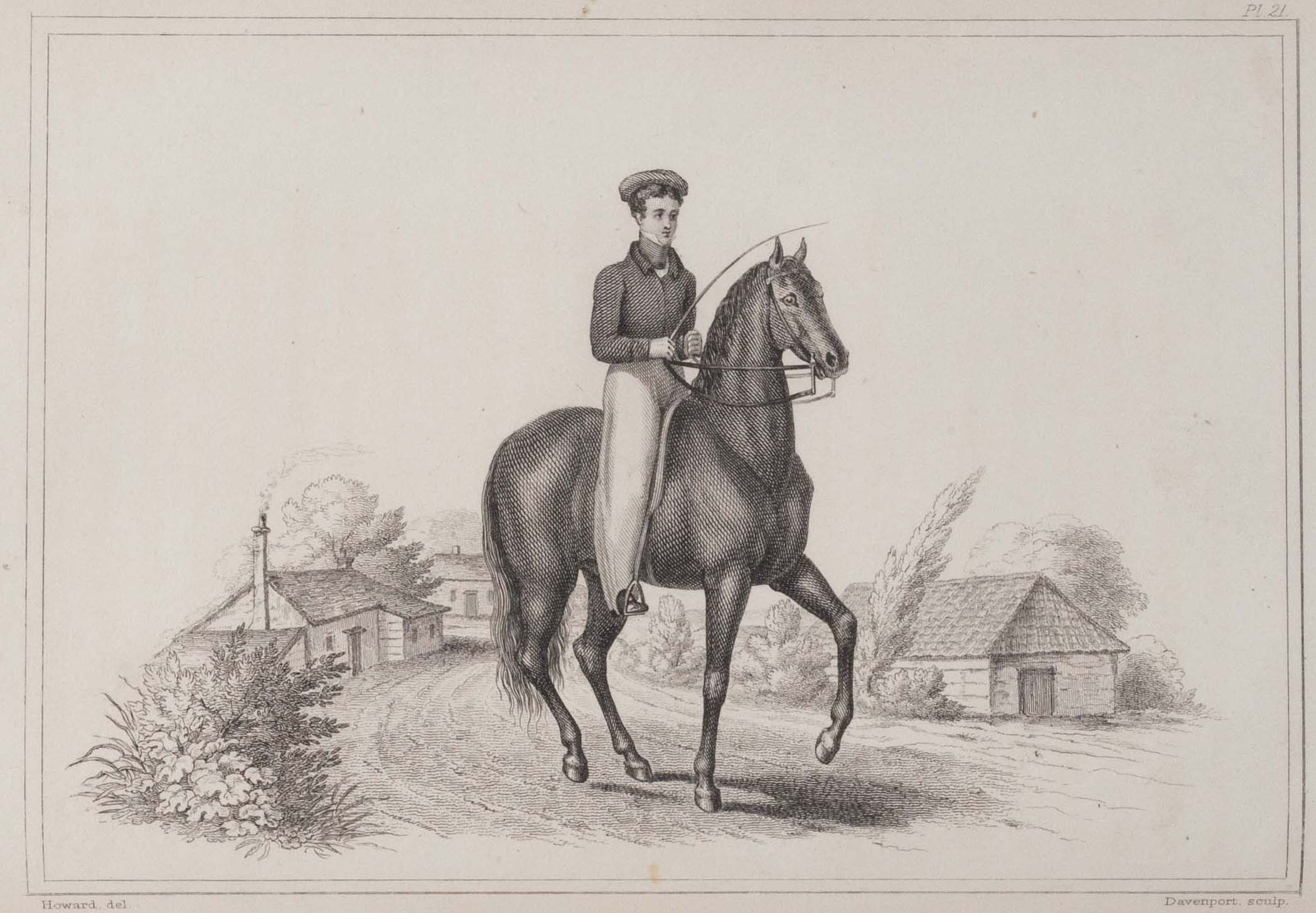
ALLEN, John.
Principles of modern Riding for Gentlemen, in which the late Improvements of the Manege and military Systems are applied to Practice on the Promenade, the Road, the Field, and the Course.
London, C. & C. Whittingham for Thomas Tegg, Glasgow, for R. Griffin & Co., and Dublin, for J. Cumming, 1825.
8vo, pp. xiv, [1], [1 (blank)], 286, with 32 steel-engraved plate by Davenport after Howard (one as frontispiece); stain to pp. viii-ix, offsetting from plates; a very good, broad-margined copy in modern half morocco with cloth sides; spine minimally sunned, slight rubbing at extremities.

Added to your basket:
Principles of modern Riding for Gentlemen, in which the late Improvements of the Manege and military Systems are applied to Practice on the Promenade, the Road, the Field, and the Course.
First and only edition of an uncommon riding manual. A riding master teaching near Bryanstone Square, John Allen ‘flatters himself that, at a time when riding has become so fashionable an exercise, his work will more than any preceding one ensure the security, ease, and grace of the rider, both in the practice of the manege, the only true and fundamental system, and in its application to the Promenade, the Road, the Field, and the Course’.
With elegant equestrian engravings by Samuel Davenport (1783–1867), ‘one of the first to engrave on steel’ (Benezit).
Not in Mellon.

